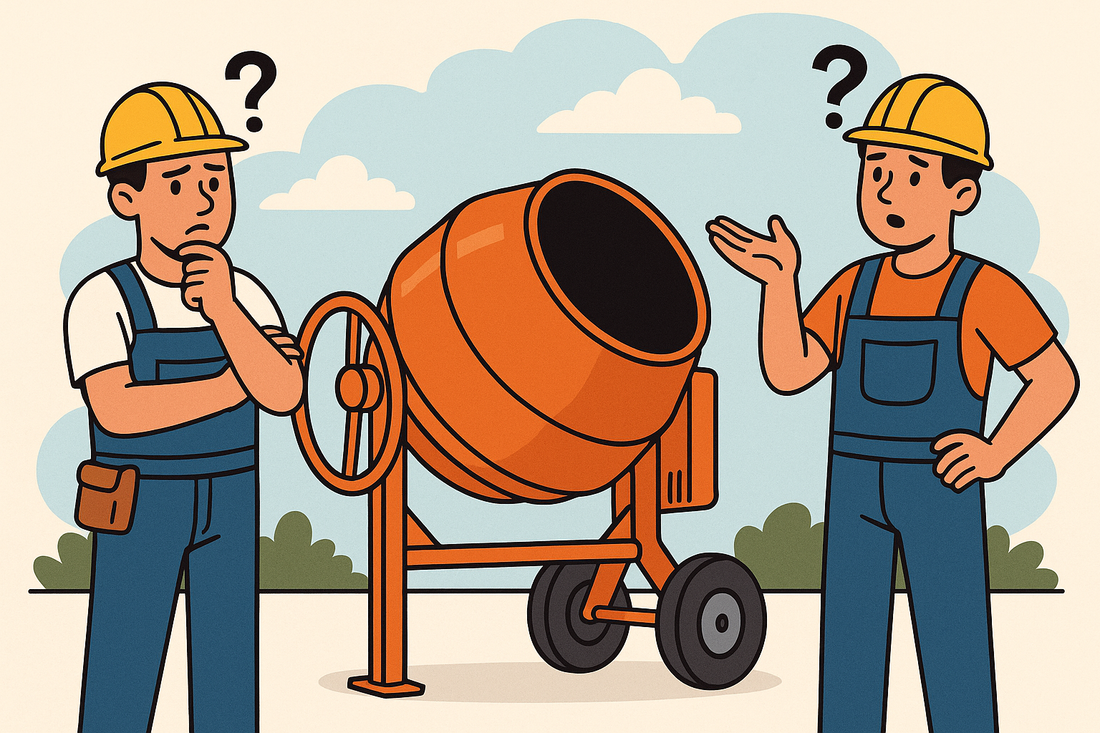
Do You Put Water or Cement in a Cement Mixer First?
If you’re new to mixing concrete or mortar, one of the most common questions is: what goes into the mixer first, water or cement? Getting this right makes all the difference to your mix’s consistency, strength and workability.
The short answer
Always add water first. Starting with water prevents the dry cement from sticking to the drum and ensures the mix turns smoothly.
Why water goes in first
Stops sticking – If cement hits a dry drum, it clings to the sides and hardens. Water creates a slippery base.
Even mixing – With water at the bottom, the blades can pull the dry materials through more evenly.
Saves time – Less scraping and cleaning out stubborn lumps stuck to the drum.
The right order for mixing
Add water – Around half your total water to start.
Tip in half your aggregate (sand and gravel).
Add cement – It blends more evenly when sand or ballast is already turning in the water.
Add the rest of your aggregate and water gradually – This way, you can control the consistency and avoid making the mix too wet.
What happens if you use cement without sand?
Cement on its own is not enough. Sand (or another aggregate) is what gives concrete its bulk, strength, and stability. Without it:
The mix becomes weak and brittle.
It is prone to cracking and structural failure.
You’ll only get a thin slurry that is unsuitable for building work.
Cement mixed with just water (often called a slurry) can be useful for small repair jobs like filling hairline cracks or smoothing surfaces. But for any structural or load-bearing work, sand or ballast is essential.
A note on measuring water
Most experienced bricklayers and builders will “eyeball” the water based on the mix they want. If you’re less confident, adding it in stages gives you more control. Too much water weakens concrete, so it’s better to start with less and top it up. Using the CemixFlo quick connect water pipe makes this even easier you can add water directly into the drum in controlled amounts without hassle, keeping the mix consistent and the site cleaner.
In summary
Put water in your mixer first, then build up your mix gradually with aggregate and cement. And remember: cement without sand might work for tiny patch jobs, but for any real building project, you’ll need sand or ballast for strength and durability.
